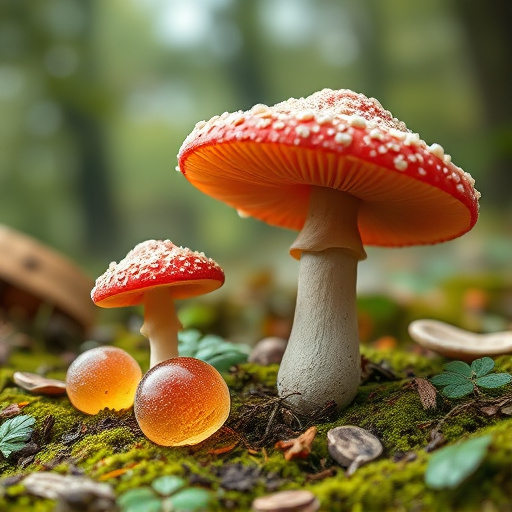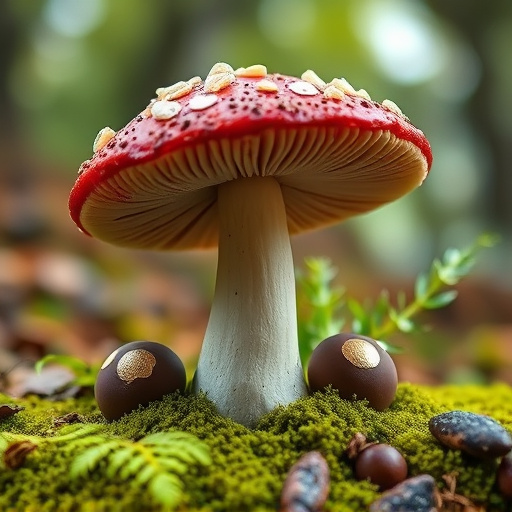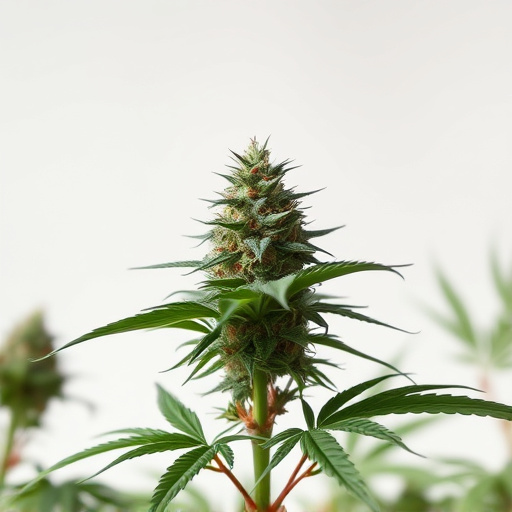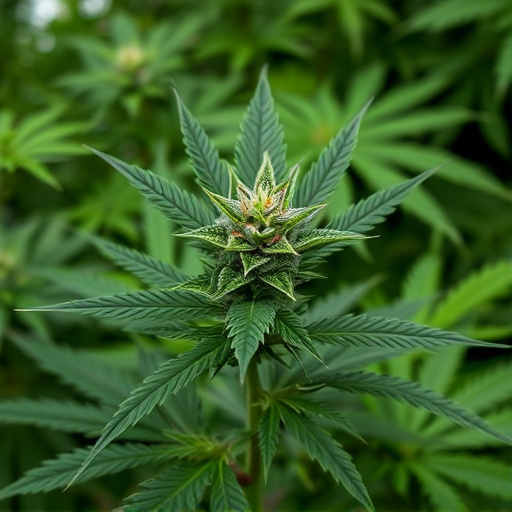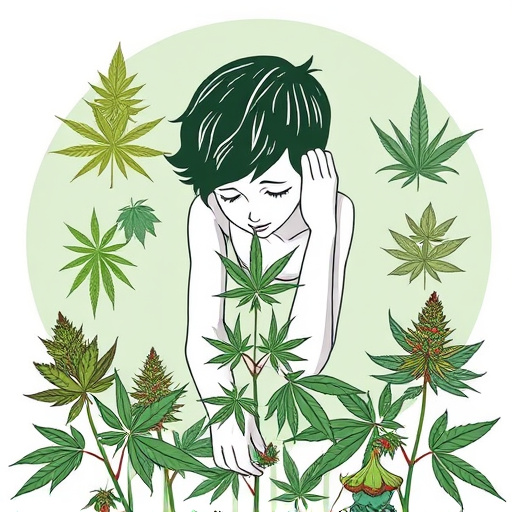The genetics of cannabis plants play a significant role in their visual characteristics and therapeutic properties, including their potential to treat depression. Each strain has a unique gene combination affecting color, shape, size, and cannabinoid/terpene production. For depression, strains are bred for high CBD and specific terpene profiles to counteract anxiety. Temperature management is critical during cultivation as it impacts plant growth, appearance, and chemical composition, with optimal temps enhancing therapeutic compounds. Understanding these genetic and environmental factors allows for the selection or development of cannabis strains tailored to individual patients seeking depression relief.
Unraveling the intricate dance between genetics and temperature reveals the captivating nuances of cannabis appearance and potency. This article delves into these factors, exploring how they shape not just the visual tapestry but also the therapeutic potential of cannabis, particularly in alleviating symptoms of depression. From understanding the genetic underpinnings of diverse strains to examining temperature’s role in growth and visual characteristics, we offer insights that can guide users seeking cannabis for mental health support, specifically focusing on cannabis strains for depression relief.
- The Role of Genetics in Cannabis Appearance and Effects
- Temperature's Impact on Cannabis Growth and Visual Characteristics
- Exploring Cannabis Strains for Depression Relief: A Genetic and Environmental Perspective
The Role of Genetics in Cannabis Appearance and Effects
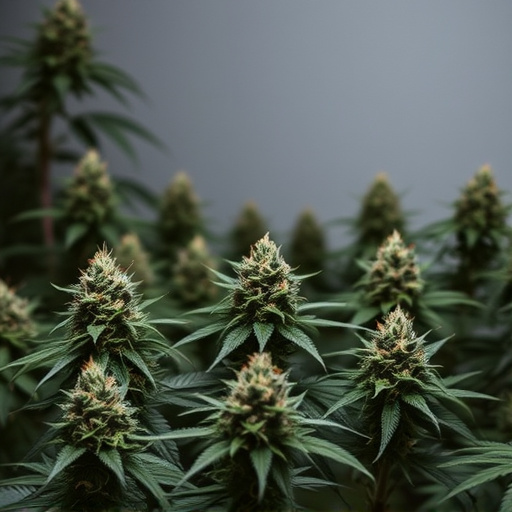
The genetic makeup of cannabis plants plays a pivotal role in determining their visual characteristics and therapeutic effects. Each cannabis strain carries a unique combination of genes that influence traits like color, shape, and size. These genetic variations also contribute to the production of different cannabinoids and terpenes, which are responsible for the distinct flavors, aromas, and potential medicinal benefits associated with each strain. For instance, some strains known for their uplifting and energizing effects may have higher levels of THC (tetrahydrocannabinol) and specific terpene profiles that promote focus and mental clarity.
When it comes to cannabis strains for depression, genetics are crucial. Certain genetic lines have been bred specifically for their potential to alleviate symptoms of mood disorders. Researchers have identified cannabinoids like CBD (cannabidiol) as having anti-depressant properties, and some strains are cultivated to maximize CBD content while minimizing THC levels, which can help reduce anxiety associated with depression without causing psychoactive effects. Understanding the genetic basis of these traits allows growers and medical professionals to select or develop specific cannabis strains that cater to individual patient needs, enhancing their therapeutic potential.
Temperature's Impact on Cannabis Growth and Visual Characteristics
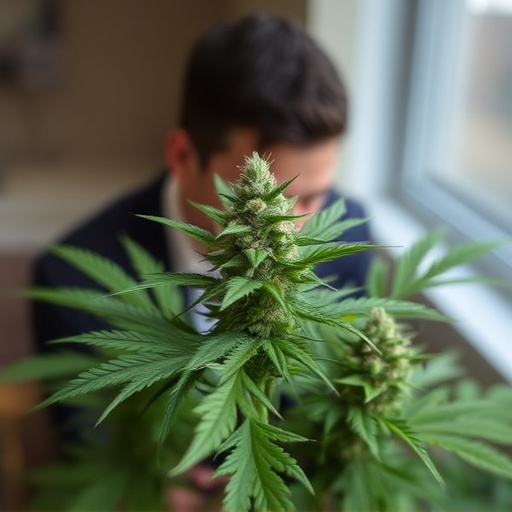
Temperature plays a pivotal role in shaping the growth and visual characteristics of cannabis plants, significantly influencing their overall appearance. Optimal temperature conditions facilitate vigorous growth, leading to healthier plants with enhanced resin production and robust terpene profiles. This, in turn, contributes to the development of vibrant colors, distinct textures, and the distinctive aroma that cannabis is known for.
For instance, warmer temperatures during the vegetative phase can encourage faster growth rates and larger leaves, while cooler conditions may slow down growth but often result in denser bud formation. When it comes to cannabis strains for depression or other medical conditions, temperature management becomes even more critical. Different strains exhibit varying sensitivities to heat, affecting their ability to express desired therapeutic properties. Understanding these nuances is essential for cultivators aiming to optimize the visual and chemical profiles of their plants, catering to specific medicinal needs.
Exploring Cannabis Strains for Depression Relief: A Genetic and Environmental Perspective

Exploring Cannabis Strains for Depression Relief is a multifaceted journey that seamlessly integrates genetic understanding with environmental considerations. Genetic makeup plays a crucial role in shaping cannabis plants’ chemical profiles, including terpene and cannabinoid compositions. Certain gene variants are associated with enhanced production of cannabinoids like THC and CBD, known for their potential therapeutic effects on mood disorders such as depression. For instance, strains high in CBD have shown promise in reducing symptoms of anxiety and depression due to its interaction with the endocannabinoid system.
Temperature, an essential environmental factor, also significantly influences cannabis plants’ development and chemistry. Optimal growing conditions, including temperature control, can enhance the expression of desirable traits within specific genetic lines. For those seeking cannabis strains for depression relief, understanding how genetics and temperature interact allows cultivators to select or develop varieties that offer the most effective chemovary for individual needs. This precision approach in cultivation holds promise for improving therapeutic outcomes in managing depressive symptoms through cannabis-based treatments.
Understanding the intricate relationship between genetics, temperature, and cannabis appearance is paramount in unlocking the potential of this versatile plant. By recognizing how these factors influence visual characteristics and effects, growers can optimize specific cannabis strains for depression relief. This knowledge allows for tailored cultivation methods, ensuring that patients access cannabis with the desired properties for their well-being. Further research along these lines promises to revolutionize our approach to using cannabis as a therapeutic tool.




